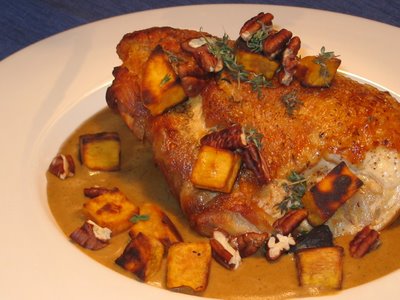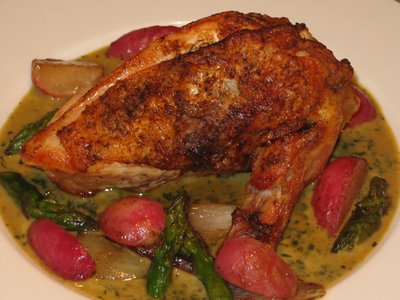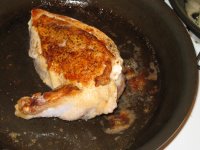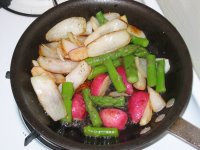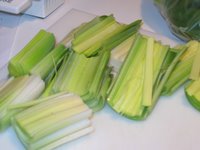Lemon and Herb Roasted Chicken
 As you can probably tell from my lack of recent posting, I have been incredibly busy the past couple months. However, things are finally beginning to slow down and it is time to get back into the swing of things with my cooking!
As you can probably tell from my lack of recent posting, I have been incredibly busy the past couple months. However, things are finally beginning to slow down and it is time to get back into the swing of things with my cooking!I was out of town the past couple of weekends, so this weekend was all about catching up and relaxing. So after a day of chores, how better to end it than with an easy chicken roasted chicken? The key here was finding a recipe that sounded tasty but was also super, super easy (after all, I was trying to minimize my day’s work).
I went to the Food Network’s website, and the most enticing recipe was from Tyler Florence for a Lemon And Herb Roasted Chicken With Baby Potatoes. It was pretty strait forward and required few ingredients. It also sounded like it would create those great, aromatic smells that I expect from roasting a chicken. So I opted for this recipe.
Now you roast chicken purists may snub your nose at this recipe, as it doesn’t require the fancy techniques to crisp the skin to perfection or to make the chicken breasts as moist as possible. However, I think the point of this recipe is producing a great tasting chicken with minimal work—not the world’s most perfect chicken.
Note that the recipe calls for 1 ½ pounds red new potatoes. In memory of my days in London, where Sunday roasts populate every home and pub, I replaced some of the potatoes with parsnips and carrots. If you choose to also do this, keep in mind that the parsnips and carrots will take less time to roast. Therefore, do not add them until about 40 minutes from when you expect the chicken to be done. Also, when you do add them, be sure to mix them with the juices.
Okay, here is Tyler Florence’s recipe from the Food Network:
- 1 (4 to 5 pound) free-range chicken
- Kosher salt and freshly ground black pepper
- 1 lemon, halved
- 1 head garlic, halved
- 1/4 bunch each fresh rosemary, thyme, and parsley
- 1/4 cup olive oil
- 1 1/2 pounds red new potatoes
- Preheat the oven to 400 degrees F.
- Rinse the chicken with cool water, inside and out, then pat it dry with paper towels.
- Season the cavity with salt and pepper, and then stuff the lemon, garlic, and herbs inside.
- Place the chicken, breast-side up, in a roasting pan. Tie the legs of the chicken together with kitchen twine to help hold its shape.
- Toss the potatoes around the chicken. Season the whole thing with a fair amount of salt and pepper and drizzle with olive oil.
- Roast the chicken and potatoes for 1 to 1 1/2 hours. Don't forget to baste the chicken with the drippings and rotate the pan every 20 minutes or so to insure a golden crispy skin.
- The chicken is done when an instant-read thermometer says 165 degrees F when inserted into the thickest part of the thigh (the legs of the chicken should wiggle easily from the sockets too.)
- Remove the chicken to a platter and let stand for 10 minutes, so the juices settle back into the meat before carving. Serve with the roasted potatoes on the side.
Enjoy!
Labels: chicken
